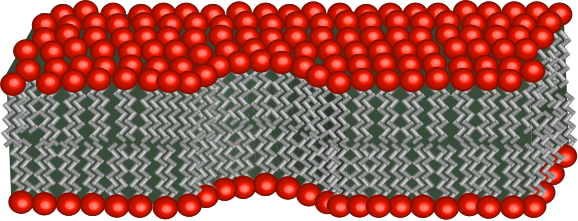Amniotic Membrane: Nature's Gentlest Waterproof Gauze Put to use in Ophthalmology
Amniotic membrane is a natural gauze and graft material most commonly used in eye surgery. The soft, clear substance occurs naturally as the inner lining of the amniotic sac of the placenta, acting as a cushion against harm. It's now used in ophthalmology in order to restore and protect the surface of the eye.

If you or a loved one have recently had a traumatic eye injury, especially a chemical burn, it's possible that amniotic membrane was used as a gauze in order to accelerate healing, provide relief from pain, and improve the chances of a full recovery. It may also have been used as a gauze or graft after ocular surgery, or to help with recovery from an eye condition.
Though the practice has been used since 1940, the use of amniotic membrane in ophthalmology did not become popular until 1995. Healthy mothers who undergo a cesarean section have the option of donating the placenta, which is then screened and cleaned to be used as an organic gauze and graft material. A thin, clear sheet of amniotic tissue is then attached to the surface of the eye with fibrin glue.
Uses of Amniotic Membrane in Ophthalmology
In Emergency Medical Care
After a traumatic injury, especially a chemical burn to the eye, amniotic membrane is applied to the surface of the eye immediately in order to provide relief from pain and improve the overall prospects of a healthy recovery.
After Oral Surgery
As a clear and resilient material, amniotic membrane has recently been discovered to be an accessible, affordable replacement for ocular tissue. After certain forms of oral surgery, we recommend covering the exposed portion of the eye with this protective substance. The most common surgeries after which amniotic membrane transplant is recommended are pterygium removal and the removal of ocular surface tumors, which leave portions of the eye exposed to the elements.
For Severe Dry Eyes
When there is no simple solution to dry eyes and a regimen of eye drops doesn't turn the problem around, a protective layer of amniotic membrane has the potential to reverse the symptoms of dry eyes, giving the ocular surface time to make a full recovery. Of course, there are many solutions to consider before going down this road. Consult an ophthalmologist for the best dry eye care for you.
For Rare Eye Disease
When the ocular surface is unhealthy, amniotic membrane may work as a gauze or graft to supplement or replace parts of the eye. Currently, this practice has seen success in treating limbal stem cell deficiency, a rare genetic disorder that causes the surface of the eye to become opaque. In the event of the rare disease, an amniotic membrane graft assists with recovery and improves vision without the need for a limbal cell transplant. As the process of finding a donor for a limbal cell transplant can be difficult, this new possibility opens doors for more patients to improve vision and quality of life.
Opportunity sometimes strikes from unlikely places. The potential for healing brought by amniotic membrane could not have been predicted until it happened, yet its natural insulating and moisturizing properties are perfect for ocular health. We are excited to see what's next in ophthalmology. Every day, new solutions are tried and tested in order to provide better outcomes for everyone.
